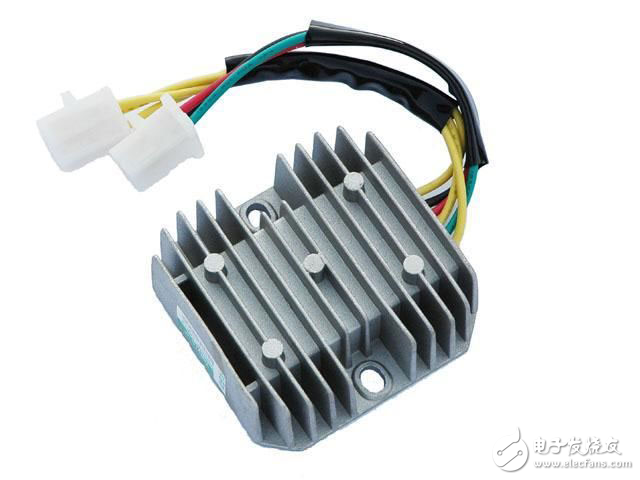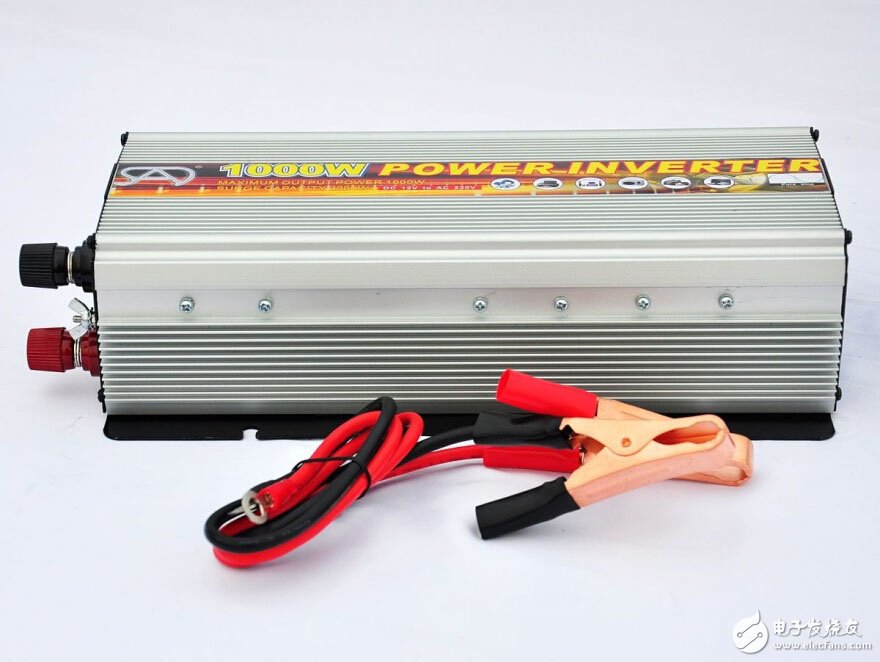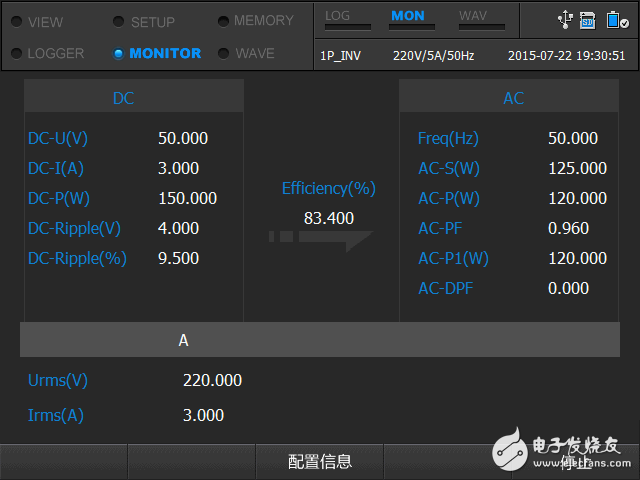In daily life, the sockets at home and the electricity meters on the streets are all AC. It seems that there is no intersection between AC and DC, just like two different fields. In fact, there are many and many connections between them.
Communication said: "I can turn into DC"
AC can be changed to DC. Our usual computers, mobile phones, etc. are all direct adapters connected to the AC outlets, and our mobile phones and computers run DC. Well, there are doubts. Since the power generation and transmission of the power grid are all using AC power, why should we turn it into DC power at this time?
The reason is this: AC is sinusoidal fluctuations on the time axis, rising from 0 to maximum, decreasing from maximum to 0, then gradually changing from 0 to negative, and then returning to 0. However, our mobile phones, computers and other electronic components work by recognizing high and low potentials. Because of their sinusoidal volatility, ACs generate high and low potentials, which cause conflicts with the logical judgment of electronic components. For example, a computer has a potential of 1 and a potential of 0, and the AC itself has a potential of zero crossing. Therefore, AC power cannot work for electronic components.
So, who is going to complete the work of converting AC to DC? The rectifier, as shown below, is a common rectifier product.

Figure 1 Common rectifier
When using an appliance such as a computer, we need to convert the AC to DC through a rectifier for use. For example, the washing machine we usually use, the drive motor uses AC power, and the control panel is the rectified DC power.
DC is not satisfied, I will change communication
So, is there a scene of DC change communication? The answer is yes. Inverter This device was born for DC conversion to AC.
Simply put, the inverter consists of an inverter bridge, control logic and filter circuits. Widely used in air conditioners, home theaters, electric grinding wheels, computers, televisions, etc. For example, car air conditioners require inverters to convert DC power in car batteries into AC power. The following picture is a 1000W inverter product.

Figure 2 1000W inverter
How to judge the quality of an inverter?
The inverter can be divided into a single-phase inverter and a three-phase inverter by distinguishing the output AC power. A single-phase inverter generates a single-phase AC after inversion, while a three-phase inverter outputs three-phase AC. How to judge whether the inverter is good or bad is mainly judged by the following criteria.
Conversion efficiency
Since the inverter itself also consumes power, one of the natural properties of the inverter is that it cannot completely convert 100% of the DC power into AC. However, conversion efficiency is a criterion for us to judge whether an inverter is good or bad. In the GB/T 20321 standard, it is stipulated that in the rated output state, the inverter whose output capacity is not more than 2kVA, the efficiency should be greater than or equal to 80%; for inverters larger than 2kVA, the efficiency should be greater than or equal to 85%. As shown in the figure below, the actual measurement of the inverter efficiency.

Figure 3 E6500 detection of inverter efficiency
2. Ripple voltage
Ripple voltage refers to the AC component in DC. The DC voltage itself should be a fixed voltage value. However, due to the incomplete filtering of the filter circuit in some inverters, AC components are mixed into the DC. Therefore, detecting the ripple voltage at the input is an effective means of detecting the quality of the inverter.
3. Output AC power quality
After the inverter converts the direct current into the alternating current output, the quality of the alternating current power is an important indicator for detecting the inverter. If there is a power quality problem in the communication at the output, it not only affects the efficiency of the inverter, but also reduces the service life of the inverter, and is more likely to bring safety risks to the user. For example, the AC output from the inverter often contains harmonics. The following figure shows the harmonic detection of the E6500 to AC.

Figure 4 E6500 detection harmonics
The mutual conversion between AC and DC is one of the root causes of power quality problems. For example, in the process of AC to DC, the output DC may entrain AC components, causing damage to electronic components. In the process of DC inverter to AC, the filtering is not complete, which will cause ripple voltage to the DC of the input terminal and affect the efficiency of the input terminal. At the same time, it will bring a lot of power quality problems to the communication at the output. Such as harmonics, imbalances, and so on.
Inverters and rectifiers are widely used in daily life applications, and DC exchanges are mutually converted, and power quality problems are often overlooked. These quality problems may cause property damage or even life safety (such as mobile phone charging explosion, auto air-conditioning, etc.). Therefore, the issue of power quality of electrical appliances should cause us to pay enough attention.
1.27mm (0.05") Pitch Pin Headers
Antenk offers a variety of high quality and competitively priced 1.27mm pitch single,dual, three and quad row pin (male) headers used in many board-to-board PCB connections, fitting small-sized, densely-packed devices.
This low-profile component is made from high-temperature thermoplastic and is offered with several means of connections and mounting styles such as through-hole (THM) or surface mount (SMT) and can be in vertical (straight), elevated or at a right angle configuration/orientation dissipating current of about 1.0 A or less.
The pin (male) header is generally mated with receptacle or stackable header connectors (female sockets). This types of pin headers are suitable for PCB board to board connection or for signal transmission application.
Applications of 1.27mm Pitch Pin Headers
Small equipment and devices can highly benefit from the small but robust stature of the 1.27mm pitch Pin Header as its material is tested for high-vibration and shock requirements of the automotive, industrial, and consumer electronics industries. This 1.27mm pitch pin header is widely used in diverse applications such as:
Medical Diagnostic and Monitoring equipment
Communications: Telecoms and Datacoms
Industrial and Automotive Control and Test
Retail and Point-Of-Sale equipment
Mil/Aero and Home Security
Solar applications
Weighing systems
Vehicle infotainment
Computer peripherals
Telecommunications
Heart monitors
Mount Type:
Through-hole vs Surface Mount
1.27mm pitch pin (male) headers are offered in either Surface-mount or Through-hole mount termination. At one side of this pin header is a series of pins which can either be mounted and soldered directly onto the surface of the PCB (SMT) or placed into drilled holes on the PCB (THM).
Through-Hole (Poke-In)
Best used for high-reliability products that require stronger connections between layers.
Aerospace and military products are most likely to require this type of mounting as these products experience extreme accelerations, collisions, or high temperatures.
Useful in test and prototyping applications that sometimes require manual adjustments and replacements.
1.27mm vertical single row header, 1.27mm vertical dual row header, 1.27mm Elevated single row pin header, 1.27mm Elevated dual row pin Header, 1.27mm Right-angle single row header and 1.27mm Right-angle dual row header are some
examples of Antenk products with through-hole mount type.
Surface-Mount
The most common electronic hardware requirements are SMT.
Essential in PCB design and manufacturing, having improved the quality and performance of PCBs overall.
Cost of processing and handling is reduced.
SMT components can be mounted on both side of the board.
Ability to fit a high number of small components on a PCB has allowed for much denser, higher performing, and smaller PCBs.
1.27mm Right-angle Dual Row pin header, 1.27mm SMT Single row pin header, 1.27mm SMT Dual row pin header and 1.27mm Elevated Dual Row Pin Header are Antenk`s SMT pin headers.
Soldering Temperature for 1.27mm Pitch Pin Headers
Soldering SMT pin connectors can be done at a maximum peak temperature of 260°C for maximum 60 seconds.
Pin-Type:
Vertical (Straight) and Right-Angle
1.27mm pitch headers may be further classified into pin orientation as well, such as vertical or straight Male Header or right-angle male header.
Vertical or Straight Pin (Male) Header Orientation
One side of the series of pins is connected to PCB board in which the pins can be at a right-angle to the PCB surface (usually called "straight" or [vertical") or..
Right-Angle Pin (Male) Header Orientation
Parallel to the board's surface (referred to as "right-angle" pins).
Each of these pin-types have different applications that fit with their specific configuration.
Pcb Connector Stacking
Elevated Pin Header Orientation
Elevated pins aka Stacked Pins or Mezzanine are simply stacked pin headers providing an exact distance requirement between PCBs that optimizes electrical reliability and performance between PCB boards.
Profile Above PCB
This type of configuration is the most common way of connecting board-to-board by a connector. First, the stacking height is calculated from one board to another and measured from the printed circuit board face to its highest insulator point above the PCB.
Single, Dual or Multiple Number of Rows
For a 1.27mm straight or vertical Male Pin Header, the standard number of rows that Scondar offers ranges from 1 to 2 rows. However, customization can be available if 3, 4 or n number of rows is needed by the customer. Also, the number of contacts for the single row is about 2-50 pins while for dual row, the number contacts may vary from 4-100 pins.
Pin Material
The pins of the connector have been designed with copper alloy. With customer`s demand the pins can be made gold plated.
Breakaway design
The pin headers are also equipped with a breakaway design making them fully compatible with their female receptacles.
Custom 1.27mm Pitch Pin Headers
Customizable 1.27 mm pitch pin headers are also available, making your manufacturing process way faster as the pins are already inserted in the headers, insulator height is made at the right size and the accurate pin length you require is followed.
Parts are made using semi-automated manufacturing processes that ensure both precision and delicacy in handling the headers before packaging on tape and reel.
Tape and Reel Packaging for SMT Components
Antenk's SMT headers are offered with customizable mating pin lengths, in which each series has multiple numbers of circuits, summing up to a thousand individual part number combinations per connector series.
The tape and reel carrier strip ensures that the headers are packaged within accurately sized cavities for its height, width and depth, securing the headers from the environment and maintaining consistent position during transportation.
Antenk also offers a range of custom Tape and reel carrier strip packaging cavities.
Pin Header Connector,1.27Mm Male Header,1.27Mm Male Header Pins,1.27Mm Pin Header Connector,0.05in Male Header,1.27mm SMT (Surface Mount) pin header,1.27mm Right-angle (Through hole) pin header
ShenZhen Antenk Electronics Co,Ltd , https://www.antenk.com